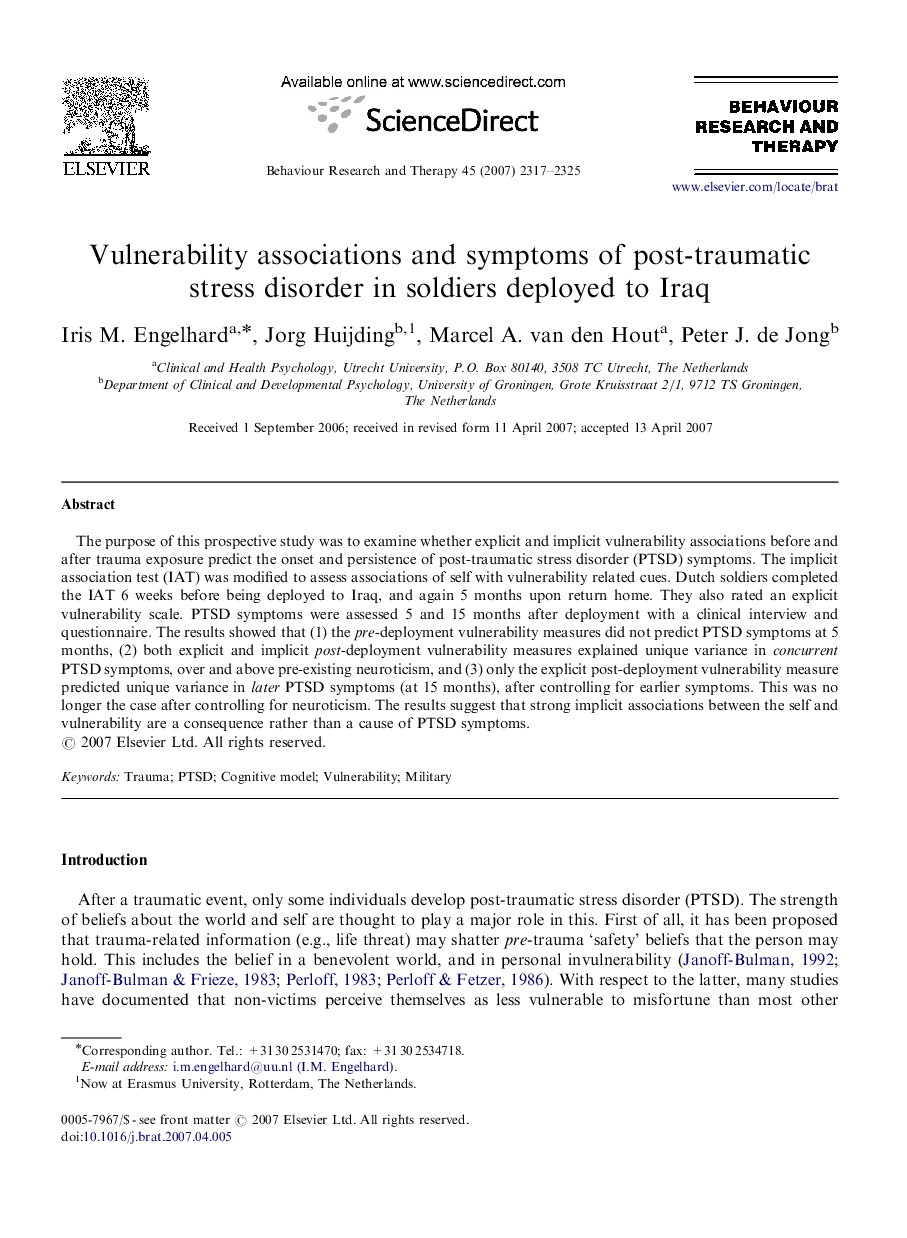| Article ID | Journal | Published Year | Pages | File Type |
|---|---|---|---|---|
| 902294 | Behaviour Research and Therapy | 2007 | 9 Pages |
The purpose of this prospective study was to examine whether explicit and implicit vulnerability associations before and after trauma exposure predict the onset and persistence of post-traumatic stress disorder (PTSD) symptoms. The implicit association test (IAT) was modified to assess associations of self with vulnerability related cues. Dutch soldiers completed the IAT 6 weeks before being deployed to Iraq, and again 5 months upon return home. They also rated an explicit vulnerability scale. PTSD symptoms were assessed 5 and 15 months after deployment with a clinical interview and questionnaire. The results showed that (1) the pre-deployment vulnerability measures did not predict PTSD symptoms at 5 months, (2) both explicit and implicit post-deployment vulnerability measures explained unique variance in concurrent PTSD symptoms, over and above pre-existing neuroticism, and (3) only the explicit post-deployment vulnerability measure predicted unique variance in later PTSD symptoms (at 15 months), after controlling for earlier symptoms. This was no longer the case after controlling for neuroticism. The results suggest that strong implicit associations between the self and vulnerability are a consequence rather than a cause of PTSD symptoms.
